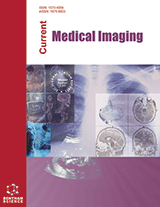
Abstract
Introduction: The maxillary sinuses are air-filled cavities which vary in size and shape. Sinus radiography has been widely used in the determination of the gender of the individual, especially in forensic investigation for human identification and sexing of individuals. The advanced radiographic techniques like cone beam computed tomography (CBCT), especially the axial and coronal sections, have been considered as a subtle concept in forensic odontology.
Aim: The current study aimed in evaluating the parameters of the maxillary sinus using CBCT and to identify its implication in gender determination.
Materials and Methods: Current study consists of 50 patients who were divided into two groups, group I consisted of 25 males and group II consisted of 25 females, where maxillary sinus dimensions like maximum length (anteroposteriorly), maximum width (mediolaterally) and maximum height (superioinferiorly) were evaluated using CBCT scans in axial and coronal sections respectively.
Results: Shapiro-Wilk test was used to determine the normality and Independent t-test was used to compare the two groups, followed by predictive analysis. Maxillary sinus, right length (p<0.001), right width (p<0.001), right height (p<0.001), left length (p<0.001), left width (p<0.001), left height (p<0.001). Right and left maxillary sinus parameters were different between males and females, with statistical significance indicating the presence of sexual dimorphism.
Conclusion: In this study, maxillary sinus parameters like length, width and height in CBCT were significantly different between males and females. Maxillary sinus can be a useful gender predictor in the forensic identification of the individual.
Keywords: CBCT, Radio morphometric analysis, Maxillary sinus, Tomography, Skeletal remains, Cavities.
 1
1











